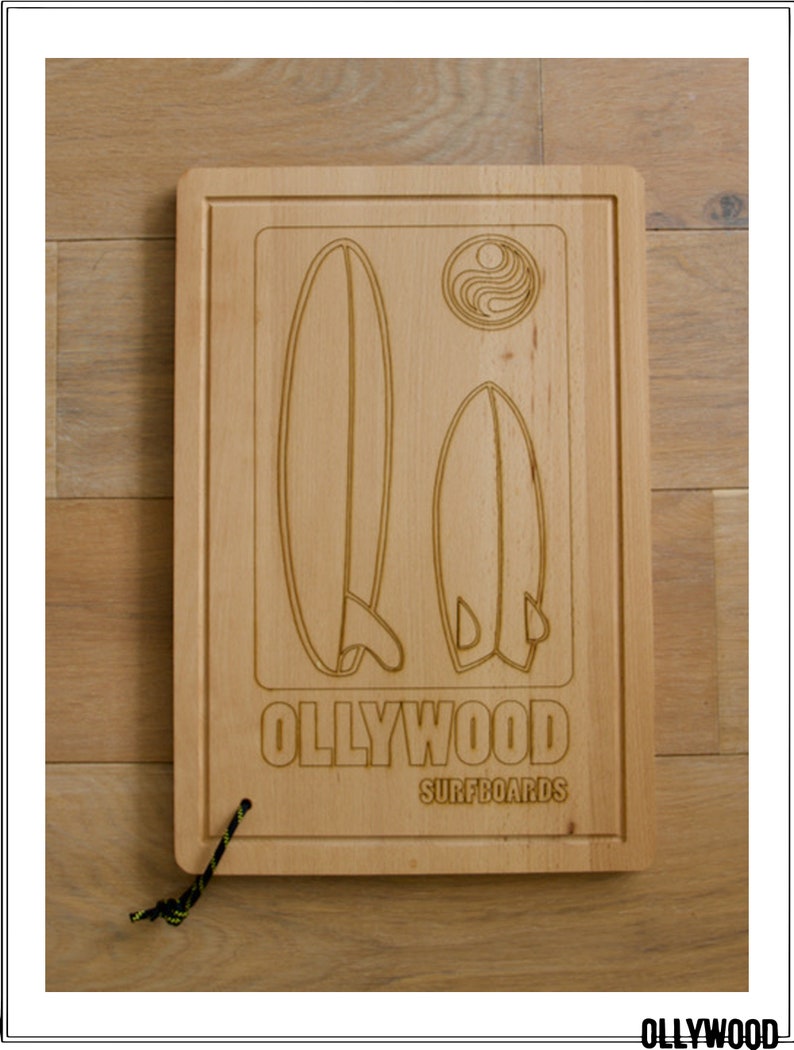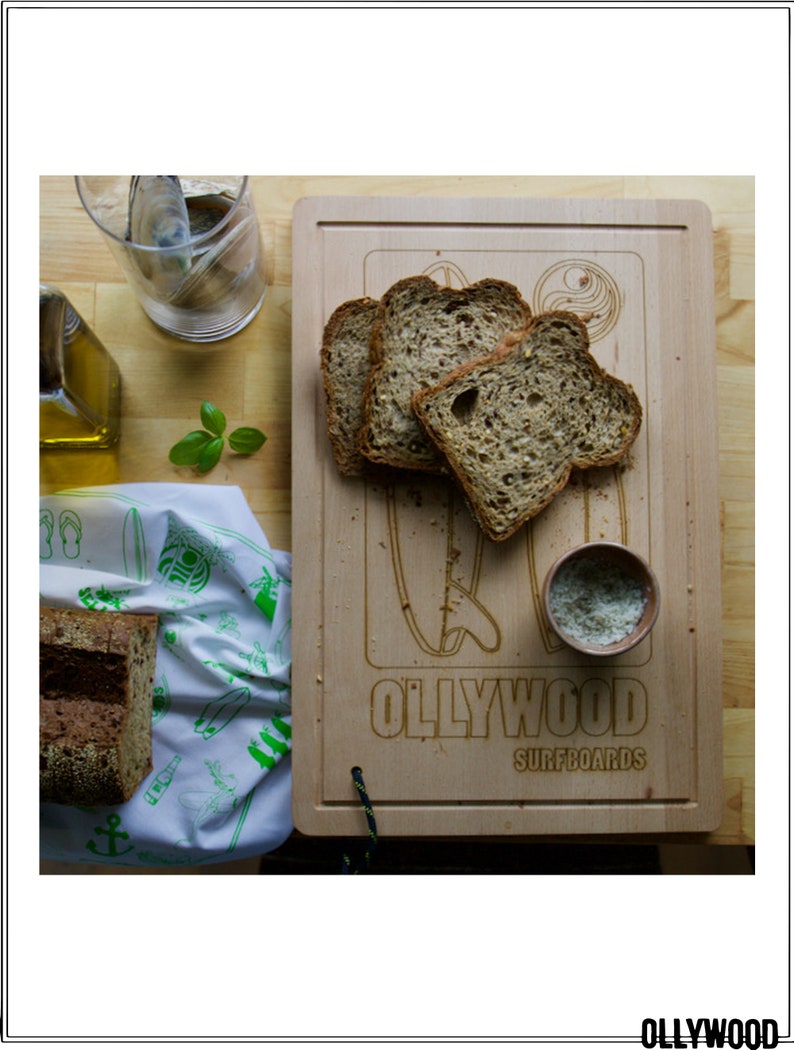Description
Unieke surf gerelateerde snijplank. De twee beste surfplanken verzameld op dit board. De vis en het longboard, getekend door Olaf de Vries (Ollywood Surfboards).
Afmeting: 39,5×26,5x2cm
Instructies voor het eerste gebruik:
Om de snijplank vochtbestendig te maken, moet u deze eerst behandelen met olie (zonnebloem of mineraloïde). Wrijf olie over het hele oppervlak van de snijplank, inclusief de hoeken, zijkanten en onderkant. Verwijder de overtollige olie en herhaal het proces de volgende dag. Smeer vervolgens de snijplank in (herhaal hetzelfde proces) om de twee maanden.
Instructies voor het onderhoud van de snijplank:
Dompel de snijplank niet langdurig onder in water. Gebruik een doek om de snijplank zorgvuldig te drogen en leg deze op zijn kant om verder te drogen. Stel de snijplank niet bloot aan hoge temperaturen om het droogproces te versnellen. Ga voorzichtig om met :).
Omschrijving
Gemaakt van beukenhout
Eenvoudig schoon te maken
FSC – verantwoord hout
Ontwerp: Ollywood Surfboards




